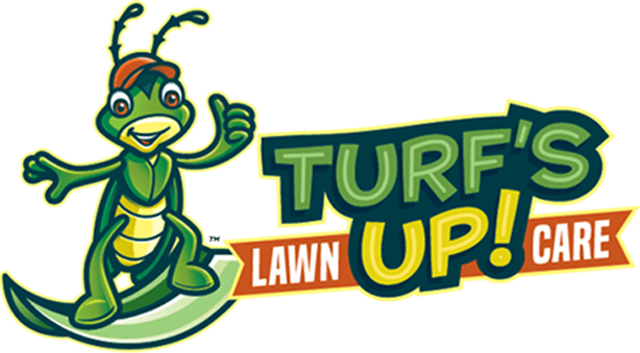Your lawn is so much more than just the green grass surrounding your Northern Virginia home.
It’s your refuge away from that demanding world outside your property that comes with stress and responsibility and deadlines. It’s an escape where you can put long days behind you, enjoy time with friends and family, and embrace that thing there never seems to be enough of: relaxation.
Maybe as you unwind you even get a chance to play some bocce ball with your kids, give Rover that game of fetch he’s always begging for, or sip a cool drink as you grill up those steaks you have been craving. This is the place where you get to take some deep breaths, smile and laugh.
And your lawn is there for all of these moments. It’s the background for your fun playtime in the yard, your adventures in outdoor cooking, and the frame around your perfect patio and outside entertainment zone.

When your lawn looks great, it is a strong place for these memories to be made. But when your lawn is spotty with bare areas, riddled with weeds, and brown or discolored, it doesn’t make the best getaway. Talk about a distraction. Who can focus on grilling barbecue chicken when they’re stuck pulling weeds or trying to spread some grass seed and water it in hopes it’ll grow and make the area look better?
How to make your lawn lush and green shouldn’t be something that dominates your every thought when you just want to unwind. When you want to do whatever it takes to get your lawn looking good again, the steps should be easy to follow and understand.
Steps to a Healthy Green Lawn in Northern Virginia
Here are the six steps to a healthy lawn in Northern Virginia:
- Don't Skip a Soil Test
- Embrace a Fertilization Plan
- Target Your Weeds
- Remember Annual Aeration and Overseeding
- Mow and Water Correctly
- Find the Right Lawn Care Professional Partner
We’re here to make things simpler for you.
Then all you have to do is enjoy your healthier, greener lawn. Game on!
6 Steps to a Healthier Lawn That You Need to Know
Lawn care is a science, and one that has certain steps to achieve maximum results.

Therefore, as long as you don’t skip the steps, you can get the greener, thicker grass you’re after.
Keep these key tasks on your list to achieve your desired outcome.
Step #1: Don’t Skip a Soil Test
Your soil health is an essential part of how to maintain a healthy lawn.
And since your soil is below the grass blades you can see, you need to dig a little deeper to find out more information about what’s going on down there.

Your soil requires a specific pH range to grow healthy grass. The pH is the level of alkalinity or acidity your soil possesses. Higher pH values are more alkaline, while lower pH levels are more acidic. Northern Virginia soils are naturally more acidic, so it’s common for pH values to be low – maybe between 5 or 6. The ideal pH level for growing a greener, thicker lawn is between 6 and 7.
What your soil pH is out of whack, any efforts you attempt to help your lawn can fall short. Your soil can’t even take in the fertilizer you apply.
A soil test will tell you exactly what’s going on in your lawn. It’ll give you your pH value. Then you can take that information and determine a plan to improve your soil.

Many times, to correct an acidic soil will require lime applications to get your soil to the proper pH. Once you’re there, your lawn will more easily take in fertilizer and nutrients and become happier and healthier.
And don’t think that if your neighbor got a soil test and has decent soil that you’re in the clear. The soil between properties can be extremely different, which is why their lawn care program could be working better than yours or vice-versa.
A soil test ensures your lawn care program is customized to your property’s specific needs.
Step #2: Embrace a Fertilization Plan that is Based on Your Soil Test Results
In suburban environments, the soil isn’t as rich and full of nutrients as in natural environments like the forest floor. All the development and home building removes that quality topsoil during the process.
As a result, your home landscape base needs nutrients put back into it. This is the major benefit of regular fertilization.

Another big step to a healthy lawn then is a fertilization program for your lawn that is based on your soil test results. This way your lawn is getting the nutrients it’s lacking.
Fertilization applications typically begin in spring and continue at regular intervals throughout the growing season and into fall. Spring fertilization helps your lawn develop topgrowth, while fall fertilization aids the deeper growth of lawn roots.

This consistent nutrition is important to continue to improve your soil and give your lawn an essential health boost.
Step #3: Target Your Weeds to Prevent a Weed Takeover
Other things that get in the way of your quest to make grass greener are weeds. Weeds tend to be the bane of your lawn’s existence to beautify your landscape.
But weeds are more than just eyesores. They compete with healthy grass for everything from nutrients to water to sun. That means over time weeds will take over and your quality turf will diminish. What’s wrong with this is weeds are leggy and inconsistent, so they don’t give you that thick, healthy, uniform green that a lawn can.

What you need to stay ahead of weeds is a weed control program that focuses on proper weed identification. This way you know what weeds you’re dealing with and can treat them properly. Some weeds will require properly timed pre-emergent herbicide applications, while others will need post-emergent herbicide applications.
This is because certain weeds are easier to control before they emerge. Crabgrass is one of them. Once crabgrass emerges, it has a tendency to take over, becoming harder to fight.
Also, different weeds grow at various times of the year, so knowing their tendencies can help you better fight them.

A targeted plan focused on your specific weed issues is the best way to have a targeted approach, as well as one that doesn’t require constant supervision and attention.
Step #4: Remember Annual Aeration and Overseeding
Thicker grass happens when you provide proper care.
Lawns are walked on and rained on over the years. This makes them compact over time. Compaction doesn’t allow water and nutrients to reach the lawn roots like they need to.

Enter aeration. Aeration is the process of using a machine called an aerator to pull small plugs of soil from your lawn and deposit them back over it so they break down. This helps not only air out your lawn soil and break up compaction, but also slowly add more organic matter to the area.
Since these soil plugs have created small openings, this is also a great time to overseed your lawn to add more quality grass seed to your yard. This is an excellent approach when growing greener, thicker grass because it helps the good grass take over and keeps weeds at bay. And seeds have a better chance of germinating after aeration because the seed to soil contact is optimal.

Some companies like Turf’s Up will also include topdressing in this service. During topdressing, we add a layer of compost after the lawn has been aerated so it falls into those soil plug holes, mixes with the clay soil, and improves your overall soil structure.
Step #5: Mowing and Watering Correctly Make a Big Difference
While fertilization, weed control, aeration, and overseeding are great steps to a healthy lawn, so is doing the basics right.
This means mowing and watering correctly.

With mowing, you’ll be mowing about once a week during the growing season. You never want to remove more than one-third of your grass blade at any one time, and this timing is what helps you do that. Cutting off too much grass at once can cause yellowing.
You also want to sharpen your mower blades to ensure clean cuts versus tears

With watering, you want to ensure the right amount – about 1 inch of water weekly. Avoid under- or over-watering to limit lawn stress.
Step #6: Find the Right Lawn Care Professional Partner
While some of these steps may sound doable to you, others probably seem a little more challenging to understand, as well as get right with proper timing, products, equipment, and applications.
Not to mention, you have some other things on your plate to worry about like your work and family responsibilities.

That’s why hiring the right lawn care partner in Northern Virginia can help you make your grass greener.
They can do your soil test, come up with a plan specific to your lawn’s needs, keep your lawn care on schedule, address problems as they come up, and protect your lawn against threats.
During this time your only job is to enjoy your lawn.
Leave How to Maintain a Healthy Lawn in Northern Virginia To Us
Maybe you’ve had a hard time maintaining your lawn and don’t have time to follow the steps.
We completely understand. Building a thicker lawn can feel like a part-time job. And with everything else on your to-do list, who has time for a part-time job?
Let Turf’s Up take on your lawn care needs and give you that relaxing and greener, lusher backyard experience you’re longing for. We know Northern Virginia lawns and would love to bring our expertise to your yard.
Ready to learn why Turf’s Up could be your totally awesome choice for lawn care services in Northern Virginia? We’re stoked to learn more about you and help you have the best lawn on the block. Get started today with a free quote. Together, we can prepare a customized plan that is perfect for you and your lawn.




